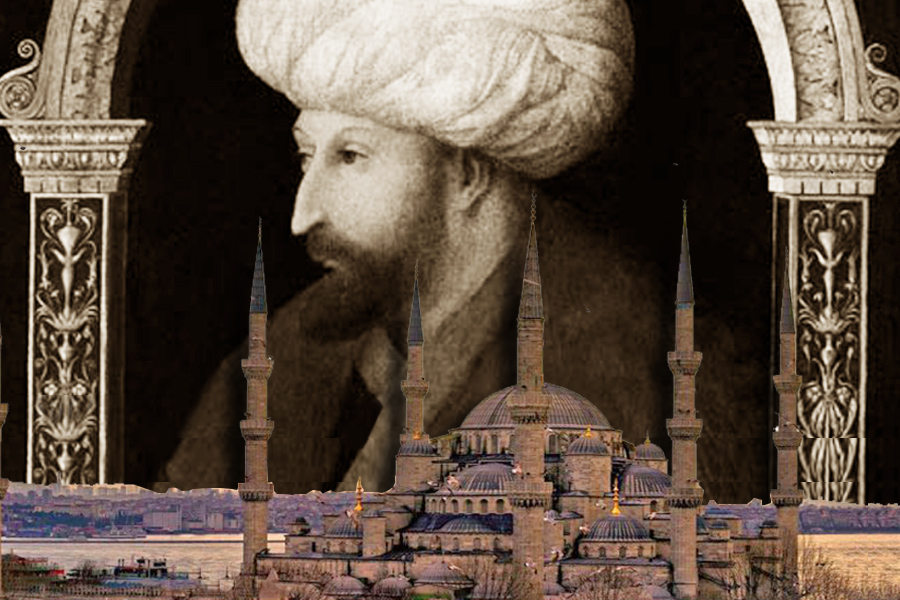Sat 18 July 2020:
Napoleon once said, “If the world was only one country, Istanbul would be its capital!”
Second Caliph of Islam Umar Ibn Khattab didn’t convert churches or synagogues into mosques as the keys of Jerusalem was handed over to him in a peace treaty with conditions agreed upon on both sides. Constantinople was conquered by war and the Ameer who was Muhammad Fatih had the right to do it and this is according to the Islamic jurisprudence.
Mufti Taqi Uthmani a Pakistani Islamic scholar and former judge has written in Jahaane-e- deedah:
“If a city surrenders peacefully to a Muslim army, and add protection of their places of worship as part of the peace treaty, than the Muslims are obliged to keep the places of worship like in Jerusalem. If it is conquered, then Muslims have the right to deal with it as deemed appropriate.
According to Islamic law, you have to own something to give it as an endowment (Waqf). This proves that the Sultan owned it and then gave it as an endowment (Waqf). He reportedly paid 50,000 gold coins for it on its neglected state and had tp restored to its rightful place, truly as a place of worship. So it remained a place of worship.
There is no doubt that Sultan Muhammad II was a genius in this matter. He made sure that the operation was not dependent on his quality as a Sultan or the Ottoman State. In fact, the process that took place is unprecedented in history because he proposed the purchase of the church from the Orthodox Patriarchate of Constantinople, an acquisition that was to be carried out in his own name and with his own money.
This amount of money was neither that of the Sultanate, nor that of Bayt al-mâl (Public Treasury). Thus, the transfer contract was concluded on a personal basis. This agreement has been registered as a sales contract. Likewise, the price was paid in installments, which is proven by receipts. Following the acquisition, the Sultan established a Waqf (charitable foundation under Muslim law) and bequeathed his new property to it. This transfer of ownership is also documented by a notarial act. At the time of the Land Registers (Tâbû), this property was registered as the exclusive property of the Waqf of Muhammad al-Fâtih.
When the case was studied, the investigation identified 27,000 historical documents. The researchers found in these files the original title of ownership (sanad tebu) specifying the owner of the building, which is none other than the waqf put in place by the Sultan.
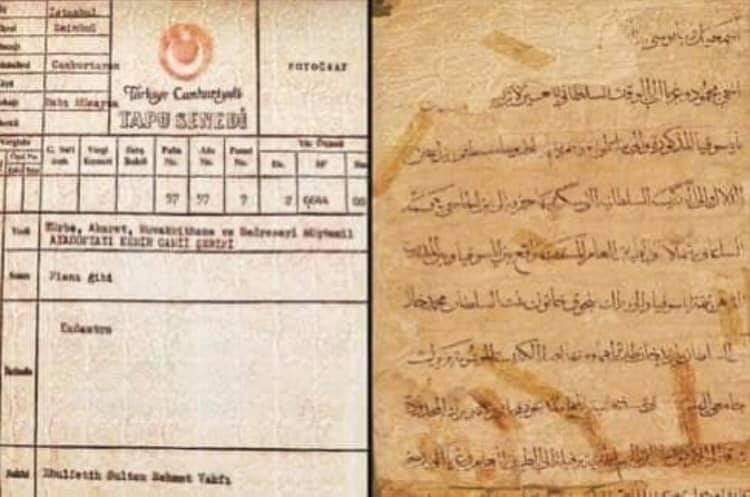
When it was turned into a museum in 1936, it ceased to be a place of worship. What Erdogan has done now is to restore it to its former glory and beyond. Why beyond? Since the ruling restores it as a place of worship for all. The top floor which has the murals and mosaic of Christian symbolism, like the mosaic portrait of Jesus, will be kept in tact and have a curtain separating it from the bottom floor, where the Muslims will be praying.
The entire complex will no longer have an entrance fee, Hagia Sophia used to bring USD$ 50 million a year in revenue for turkish government from the entrance fee alone. Turkish authority maintains its rightful place in history as an example of the most viable solution and co-existence for inter-faith harmony. Hopefully this will be the benchmark for Europe and the rest of the world, as the best way to promote acceptance and tolerance of everyone.
Despite that,Muslims in many instances in History, purchased Non Muslims places of worship, as in Damascus and Hagia Sophia.”
Did you know that some of the churches were given to the Jews who converted it to synagogues, whilst others were given to the Armenians who converted the Orthadox churches to Armenian Christian churches.
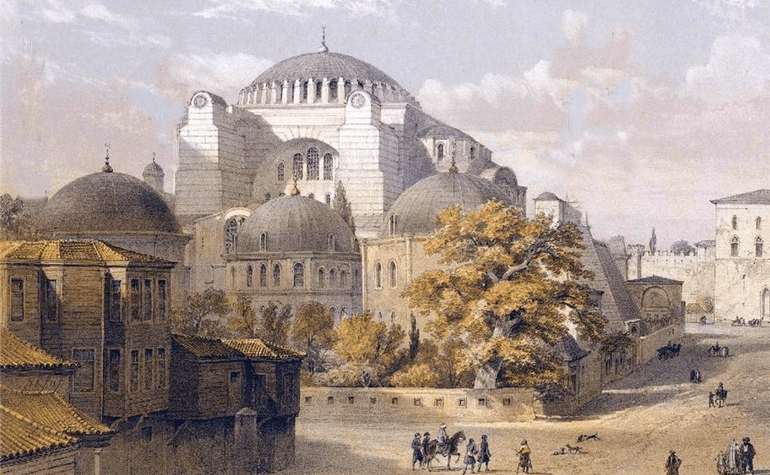
A Brief Biographical Background of Sultan Muhammad Al-Fatih
Al-Fatih’s (1432-1482) real name is Muhammad bin Murad, better known as Sultan Muhammad II, or Sultan Muhammad al-Fatih, referring to his success as the “pioneer or conqueror of Constantinople”. He was born on March 30, 1432CE in Adrianapolis (Turkish border-Bulgaria). He was the fourth son of Sultan Murad II.
Muhammad al Fatih was a very intelligent person, Prophet Muhammad prophesied : “Constantinople will definitely be conquered. What a superb leader he will be and what a glorious army that will be !!” (Ahmad)
Sultan Muhammad Al Fatih spoke more than 5 languages and memorized the Quran by heart as he was trained by Mulla Gurani who taught him everything about Islam by the age of 14. Al Fatih also learnt astronomy and mathematics.
Early attempts
The companion of Prophet Muhammad in the era of third caliph Uthmaan began planning the siege. During the era of Muʿāwiya ibn Abī Sufyān in 48 or 49 hijri, an army was dispatched under the leadership of Yazeed wherein senior companions of Prophet Muhammad participated, the likes of Abu Ayoob Ansari, Abdullah bin umar, Abdullah bin Zubair and Abdullah bin Abbas.
The Muslim armies on various occasions since the Khairul Quroon, the golden era of Islam, attempted to conquer and besieged the stronghold and capital of the Byzantine empire which was the largest and wealthiest city in Europe, strategically positioned to dominate economic life and command trade routes, famed for its sophisticated defense mechanisms which made it ‘unconquerable’.
Thereafter many attempts were made during the various Islamic empires, such as the Banu Umayyah, Banu Abbas, and the former Ottoman Caliphs. At least 11 attempts were made in Islam to conquer Constantinople, and prior to Islam, many attempts have been made by various European kings and Russian forces.
Napoleon and Tsar Alexander I of Russia did plan to partition the Ottoman Empire, but those plans never came to fruition. Napoleon admired the geographical location of Constantinople, finding it to be strategically viable.
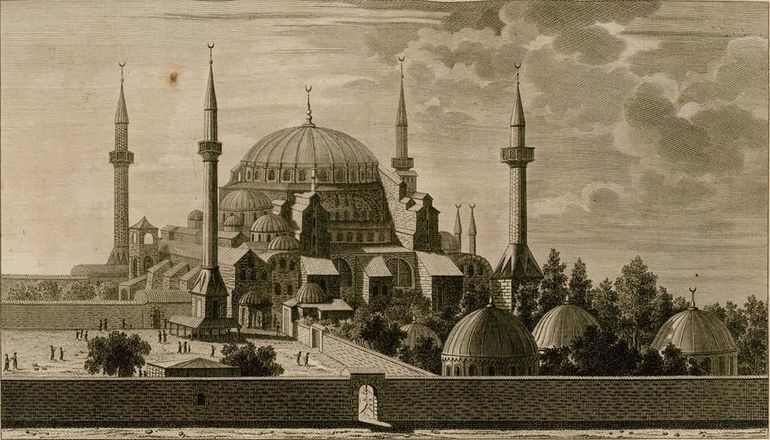
Conquest of Constantinople
Sultan Fatih, inspired by his sheikh Aq Shamsuddin and on his instruction, in accordance to the Shariah offered Constantine Three chances to surrender with protection and safety. Constantine valiantly refused and then the battle broke out.
The siege lasted for 54 days and finally, the unconquerable city for centuries fell to the Muslim army under the leadership of Sultan Muhammad al-Fatih on May 29, 1453CE-20th Jumadal Awal 857AH when he was 21 years old. The prophesy of the Prophet Muhammad to that effect, it came to reality.
Sultan Muhammad al-Fatih went to the Hagia Sophia (built in 537 AD) which was the largest cathedral in the world at that time, offered salaah, converted it to a masjid after purchasing it from the Christians, and renamed the city to Islambol.
The fall of Constantinople to the Ottoman Empire marked the end of the Byzantine Empire. The success of Sultan Muhammad al-Fatih to conquer Constantinople has succeeded in attaining prestige in the history of the development of Islam.
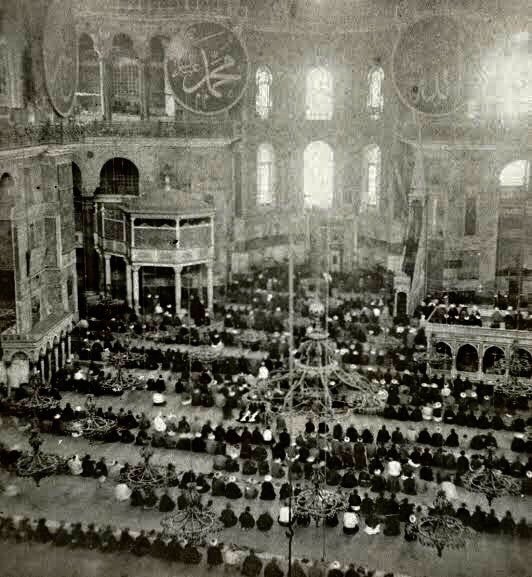
Muslim worshipers in Hagia Sophia.
As a victor, how did Al Fatih treat the prisoners of war?
• He immediately granted them amnesty
• set them free
• did not kill or oppress them
• did not convert them to Islam forcefully
• gave them their rights and was kind to them by giving more than what was due.
The success of the Islamic army highlighted the leadership of Sultan al-Fatih in planning the tactics and strategies of warfare, his willingness to take part in the tribulation with the Muslim army in the face of the enemy. His characteristic aspect and noble values led to the conquest of Constantinople.
The Capital of the Ottoman Caliphate was now moved to Istanbul which became the Emirate for the Muslim Ummah until 1922. Al Fatih continued conquering Europe raising the flag of Islam and intended conquering Rome as well. His men reached Otranto, South of Italy in the year 1481 where suddenly the news of Al Fatih’s demise broke out. He was only 53 years old.
The Vatican celebrated his demise and in expressing their happiness over his demise, the church bells rang continuously for 3 days.
From inheriting the Emirate when the Ottoman Caliphate boundaries extended to 880 000 sqkm, he departed this world leaving behind the Ottoman Empire with 2 214 000 sqkm.
He had a purpose in life.
▪︎ The ottomans ruled for over 600 years until it was formally abolished in November 1922.
▪︎ In 1923 the new Turkey was formed with its modern borders under the treaty of Lausanne.
▪︎ In 1924, 3 March, The concept of Khilafah was officially interrupted.
to be continued…
Author: OmarAl Andalusi
Omar Al Andalusi is Turkish historian, he is a commentator on Middle East affairs, and expert on topics related to cultural diversity.
The statements, views and opinions expressed in this column are solely those of the author and do not necessarily represent those of Independent Press.


